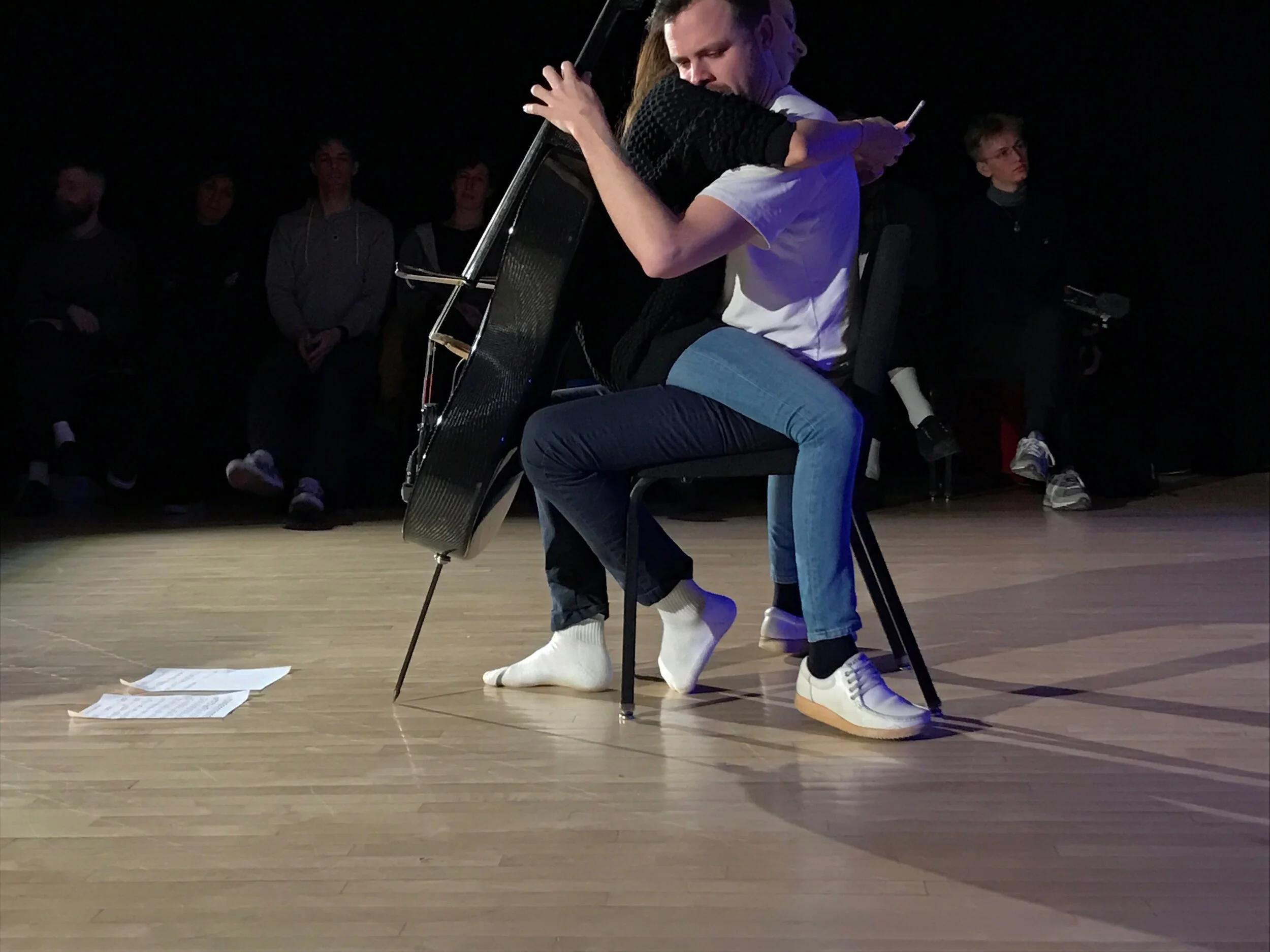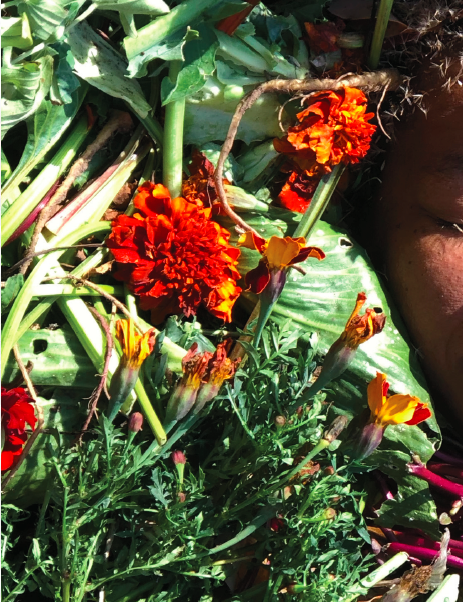The Kitchen L.A.B. Online: Regeneration
By Alison Burstein, Curator, Media & Engagement
Throughout the fall 2019 and winter 2020 seasons, The Kitchen’s L.A.B. series has focused on the notion of “regeneration,” with artists, writers, musicians, and filmmakers gathering monthly to share work and ideas in response to this term. While the March L.A.B. featuring Lauren Bakst, Felix Bernstein, Gabe Rubin, and Narcissister has been postponed in response to the COVID-19 outbreak, we are happy to have opportunities online to continue our collective exploration of this year’s key word.
A vibrant group of artists from The Kitchen’s community have participated in this year’s L.A.B. programs. Since September 2019, a series of posts on this blog has captured some of the insights these artists have offered and the artworks they have presented during each event. In September, musician and curator Taja Cheek, writer and scholar Catherine Damman, and artist and writer Constance DeJong discussed the institutional relevance of the term; in November, musicians Chris Eddleton and Avram Fefer, poet and photographer Rachel Eliza Griffiths, and artist Sara Magenheimer each performed or showed work and reflected on regeneration in relation to artistic process; in December artist Andrea Geyer, writer and AIDS historian Sarah Schulman, and artist James Allister Sprang addressed regeneration as it pertains to history and memory; and in January, artist and musician E. Jane, artist Jamian Juliano-Villani, and poet and cultural critic Wayne Koestenbaum previewed videos, images, and music before convening to discuss their shared interests in archives.
The highlights below compile just a few of the many resonant themes from the most recent L.A.B. conversation, held in February with movement-based performance artist, urban farmer, and writer mayfield brooks; cellist, composer, and writer Ethan Philbrick; and artist and filmmaker Tourmaline. At the bottom of the post, you can watch the recording of that evening’s conversation in full (you can find additional recorded L.A.B. programs—dating back to 2012—on our Vimeo page).
Please stay tuned for updates on the next events in the series, and in the interim, be in touch via our social media accounts to share your thoughts on regeneration or your responses to the artists who have taken part in this season’s series to date.
HIGHLIGHTS FROM FEBRUARY’S L.A.B.
On the meanings of “regeneration”:
Ethan Philbrick [EB]: Generate, to bring to existence, to originate by a vital chemical or physical process, to be a cause of something. It’s a material, fleshy verb. To regenerate is in most instances the again of all this: to re-bring into existence; to re-originate by a vital chemical or physical process; to renew, recreate, rebirth, restore. There is something ghostly about regenerating, to bring into existence again, to bring something back from the dead, to make fleshy again. There is a question of how much change occurs between the generating and the regenerating. Is regenerating a copying or is it a mutation? Or perhaps all generating is always already a question of regenerating. Existence is never for the first time, always a re, always a question of re-originating, of re-causing.
On the works presented during the L.A.B.:
Tourmaline [T]: A lot of what my filmmaking and my art is about is regeneration and transformation occurring through sex, death, bondage, entanglement, use, and other people’s properties. And finding the pleasure in that, the ease in that, the joy in that, and the rest in that. Both of those films, Atlantic is a Sea of Bones (2017) and Salacia (2019), are about that, and about what continues to haunt a landscape well after the event is supposedly over.
Both of the pieces engage the transatlantic slave trade and the afterlife of slavery and haunts of New York City, specifically Seneca Village and much before … These films look in those places that are in constant flight and forced into kind of fugitive relationships with the state or systemic violence. For those of us who are within these places, where is the joy in this mess of a thing, where is the mess in this mess of a thing? I try to find the pouring over, the spillage, and just revel in that.
EP: I often make work that is about re-sensing and re-fleshing a historical archive through text in performance or music … In these works I’ve been interested in regeneration as a process of forming something new from a part of something. Cutting something up so as to grow some new tissue around it. I’m also interested in sending an output through an input, making some positive feedback, amplifying currents.
I am sharing an excerpt from some new work, a series of solo cello settings of landmark texts in queer theory that wonder about the essay as form, and the desire for theory within theories of desire, and the ambivalent political history of theorizing under the banner of queerness in the 20th and 21st centuries.
mayfield brooks [mb]: For the piece Viewing Hours, which I showed selections of, I made some of the compost. So for me the work is about the making of the thing that breaks down, too, and about inviting people to feel what it is like to be in the room with that as it breaks down. And the way that work connects to the piece Letters to Marsha (Marsha P. Johnson), is because I have been writing letters to her, this ancestor, for three years. And while I was writing these letters, I started an urban farm in the Bronx. So these two things came together in my practice as a practice, together. So I feel that the ancestral call is partly with Marsha being someone who inspired me and also with my nonhuman ancestors.
On the relationship between ghosts, haunting, and regeneration:
T: Atlantic is a Sea of Bones is titled after the Lucille Clifton poem, “Atlantic is A Sea of Bones,” our bones, which is about how … the actual listening to the haunts is inextricably linked to the transformative power of haunting … In the film I wanted to capture and show and release and have spill over the joy in the hauntedness as well and the joy in what happens when we listen to forces that are really pushed down. And that’s transformation.
Egypt LaBeija goes through this process of really beautiful transformation in Atlantic is a Sea of Bones as someone who is not listening to the ghosts, not being open to the ancestors, and she then is forced to confront that, and in that confrontation, confront her own power. And in that process she feels the power of not just her being, but also of the entanglements that her being is moving through.
EP: I’ve had an impulse for a while to make collaboratively authored work with people who are no longer living. And I think there’s an impulse in that for me personally, since as a child I was really isolated and experienced a sort of lifeless loneliness a lot of times, and there was a wanting of populated absence—needing ghosts so as not to be alone. And so I wanted to have an artistic practice that could … have a sensory relationship to loss and absence.
mb: I was thinking about how compost is made with carbon and nitrogen, and how carbon is like the ghost of nitrogen. The carbon is the dead stuff you need to make it thick and rich, and then you get the green nitrogen, which is the succulent stuff. But eventually it also becomes carbon. I think there’s something about the narrative of ghost that continues to have this legacy of fear, but … there’s something about preservation in it also.
On connections across generations and with ancestors:
EP: One thing I was thinking about with our keyword and our work too is the generationality of it: regeneration is also around linkages in generations, and broken links, or repairing links, and thinking about that. [With mayfield’s work] I was also really struck by thinking about reparations, and the decomposing of worlds so as to repair worlds, and “repair” work as a phrase.
mb: I think that’s what the ancestors give us—they give us each other, and they give us ourselves. I know that I’ve changed in terms of trusting more … being able to go into the abyss just a little bit more.
T: I think especially in those moments where there’s like a pronounced feeling of without for me, like being without, that’s when I really feel the immaterial entanglement of those deep, deep, unbreakable networks of care that hold us and allow me to do my art and are really always present if I allow myself to feel them. They are the ground upon which I am moving.
Images and video: 1) Ethan Philbrick. Photo by Charlotte Curtis. 2) mayfield brooks, detail from Viewing Hours zine, 2019. Courtesy of the artist. 3) Tourmaline, still from Atlantic is a Sea of Bones (2017). Courtesy the artist. 4) The Kitchen L.A.B. with mayfield brooks, Ethan Philbrick, and Tourmaline, February 5, 2019 at The Kitchen. Videography by Iki Nakagawa.



